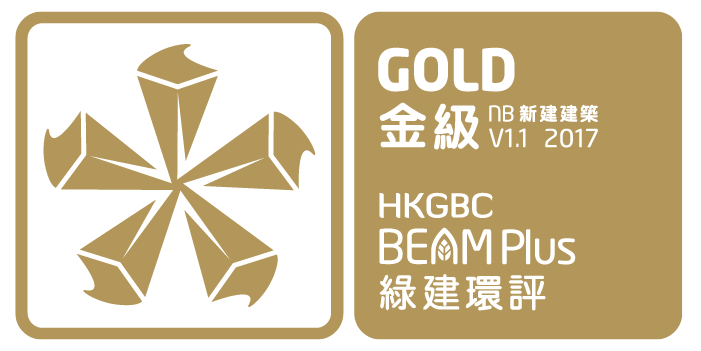


| Number of Blocks | 1 |
| Number of Storeys | 5 |
| Type | Mixed Use |
| Project Developer / Owner | Airport Authority Hong Kong |
| Project Manager | Airport Authority Hong Kong |
| Architect | Aedas Limited |
| Landscape Architect | Aedas Limited |
| M&E Engineer | Ove Arup & Partners Hong Kong Limited |
| C&S Engineer | Ove Arup & Partners Hong Kong Limited |
| Main Contractor | Gammon Construction Limited |
| Quantity Surveyor | Davis Langdon and Seah Hong Kong Limited |
| Sustainable Design Consultant | Ove Arup & Partners Hong Kong Limited |
| Environmental Consultant | Ove Arup & Partners Hong Kong Limited |
| Airport Planning Consultant | OTC Limited |
The Midfield Concourse (MFC) is a major project delivered at Hong Kong International Airport (HKIA) since its commenced operation in 1998. Situated to the west of Terminal 1 and between the two runways, the MFC increases HKIA’s handling capacity by over 10 million passengers per year. The 105,000 m2, five-storey MFC commenced construction in December 2011 and began operation in December 2015. The construction works included an extension of the automated people mover (APM) system from the existing Terminal 1. It also made available 20 new aircraft parking positions, significantly increasing the ratio of passengers boarding and disembarking aircraft using air bridges, thus enhancing the overall passenger experience.
The MFC has been designed as an exemplar sustainable building that contributes to HKIA’s pledge to be one of the world’s greenest airports. There are 35 key green initiatives that have been incorporated into the design of the MFC project to deliver a sustainable, high-performance building.
 Energy Use
Energy UseWith a view to maximizing operational efficiency, the project team systematically evaluated and prioritized the best possible combination of passive design strategies and low-energy active design techniques for incorporation into the MFC design:
 Resource Reduction
Resource ReductionIn terms of resource reduction, some of the key initiatives evaluated by the team and incorporated into the MFC design include:
 Water Conservation
Water ConservationA sustainable water strategy was adopted that utilised demand reduction, grey water recycling and condensate water recycling:
 Indoor Environmental Quality
Indoor Environmental QualityTo achieve the best possible indoor environmental quality, some of the key features incorporated into the MFC design include:
 Interior Landscaping
Interior LandscapingAlthough there are significant constraints on the provision of external planting areas at the MFC building – due to close proximity to taxiways and runways, where bird control is vital for operational safety – landscaping features including planters and green walls have been incorporated into the interior design of MFC, further optimizing the user experience and indoor environment.
Green Airport Design Strategy
The MFC was designed to be a model of sustainability, helping HKIA fulfil its pledge to be one of the world’s greenest airports.
The project team understood from the outset that the early design phase would play a crucial role in determining the building’s life cycle performance, especially in terms of resource and energy consumption. During this period the team evaluated a number of sustainable design initiatives, including innovative ideas and green design options, through the development of a project-specific “Green Airport Design Strategy”.
The Strategy emphasized three key pillars of green building design, namely the reduction of resource use; maximization of operational efficiency; and enhancement of health and wellbeing for the building occupants.
MFC Green Design Process
The team adopted a systematic approach when considering green design initiatives for the MFC project, examining the 25-year life cycle cost (LCC) as well as the environmental benefit and impact of each initiative wherever possible.
The LCC analysis was found particularly useful in facilitating a systematic evaluation of the options for passive and active energy design in the MFC project. For example, the 25 year LCC for alternative roof light design options, including (i) conventional skylight (Baseline option); (ii) skylights with light diffusing system; (iii) skylights with light shelf; (iv) skylights with automated solar shading; and (v) north-facing skylights were compared and the results revealed north-facing skylights to be the preferred primary option having the lowest 25 years LCC, while not requiring maintenance beyond that of normal skylight. There are also additional benefits in that the design of the north-facing skylights could be integrated with the requirement for smoke ventilators, and also photovoltaic cells included to capture the optimum sunlight for power generation.
According to energy modelling and operational data, the range of passive and active design technologies incorporated at the MFC can help the building surpass its targeted annual energy consumption reduction when compared with the baseline scenario. The MFC project demonstrates how the early consideration of sustainable design principles, and a systematic evaluation and prioritization of the possible combinations of passive design strategies and low-energy action design techniques, can help take forward innovative ideas and sustainable design initiatives through the different stages of a project’s development to deliver an energy-efficient, high-performance building.
Achievements and Awards
The project team’s efforts and contributions in sustainability and the built environment have been recognized through the winning of numerous awards by the MFC project, including:
The MFC serves as testament confirming HKIA’s commitment to being one of the world’s greenest airports. Adopting a similar green design strategy in the Expansion of HKIA into a Three-runway System will bring similar sustainability benefits for HKIA and Hong Kong.
| Number of Blocks | 1 |
| Number of Storeys | 5 |
| Type | Mixed Use |
| Project Developer / Owner | Airport Authority Hong Kong |
| Project Manager | Airport Authority Hong Kong |
| Architect | Aedas Limited |
| Landscape Architect | Aedas Limited |
| M&E Engineer | Ove Arup & Partners Hong Kong Limited |
| C&S Engineer | Ove Arup & Partners Hong Kong Limited |
| Main Contractor | Gammon Construction Limited |
| Quantity Surveyor | Davis Langdon and Seah Hong Kong Limited |
| Sustainable Design Consultant | Ove Arup & Partners Hong Kong Limited |
| Environmental Consultant | Ove Arup & Partners Hong Kong Limited |
| Airport Planning Consultant | OTC Limited |